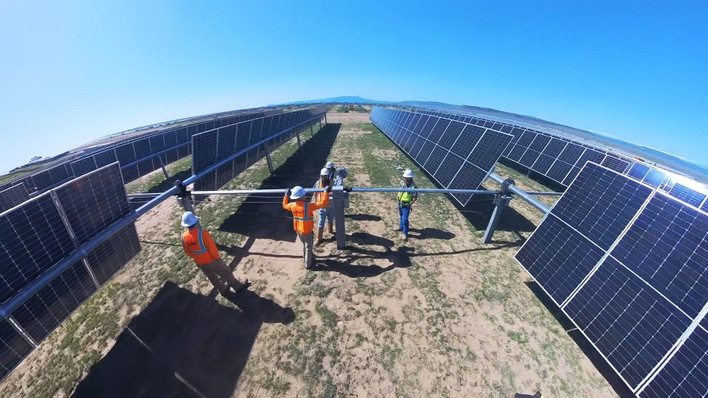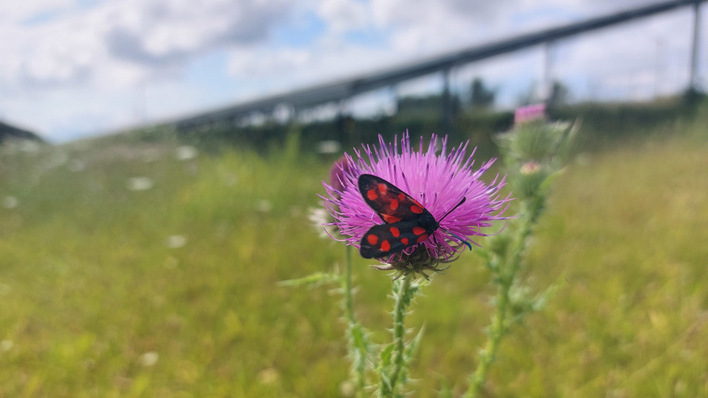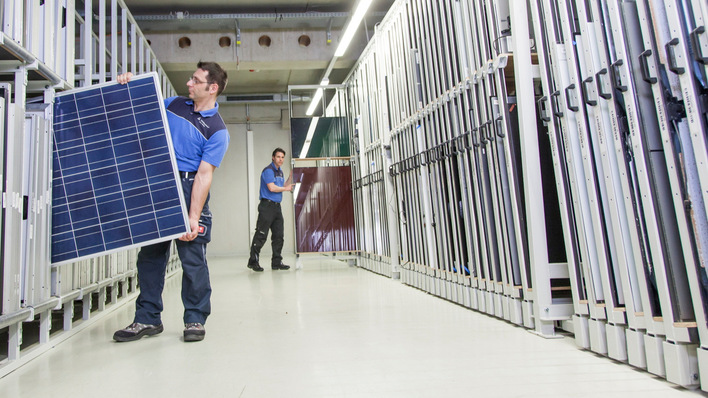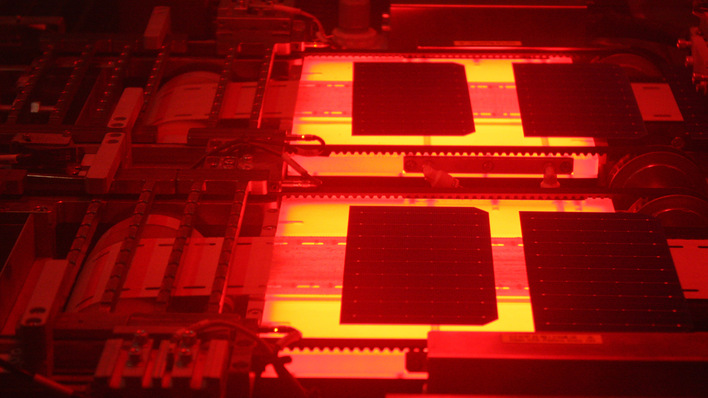Encore Renewable Energy and Greenbacker announced a new agreement for the completion of 14 solar projects aggregating to 28MW of capacity with pollinator-friendly ground cover. This initiative builds on the recently announced partnership and offers a unique opportunity to provide over 200 acres of habitat necessary for increasing the populations of pollinators such as bees and monarch butterflies.
These important species, critical to the health of our future food supply, are declining from widespread insecticide and herbicide use in addition to habitat loss from climate change and land development activities. These new pollinator-friendly solar sites will support diverse and healthy pollinator populations with a diverse mix of native grasses and flowering plants.
Multiple benefits of pollinator-friendly solar sites
“This agreement is the perfect example of a successful triple bottom line endeavor,” said Chad Farrell, Founder and CEO of Encore Renewable Energy. “We are creating environmentally sustainable ground cover that improves soil quality, fixes roots into the ground, and channels stormwater back into underlying aquifers, while addressing the social importance of supporting healthy food systems. These impacts will extend beyond the boundaries of each of these solar projects to support other species who rely on strong pollinator populations including birds, fish, other animals and, ultimately, all of us as well.”
Did you miss that? Subsidy free 50 MW PV storage project plus biodiversity improvements
“Greenbacker is excited to partner with Encore to roll out pollinator-friendly vegetation at our sites,” said Matt Murphy, COO of Greenbacker Capital. “When we can be thoughtful about our landscape design in order to improve our local ecology and community, while also driving down our overall O&M costs, we consider this a win-win. We strive to be good stewards of the land and this approach allows us to not only reduce our carbon emissions, but actively sequester carbon through the biomass of these deep-rooted perennial plants.“
Long term savings for vegetative management
The higher upfront costs of establishing pollinator-friendly ground cover in Vermont and Maine are offset by long term savings for vegetative management. Pollinator-friendly ground cover at solar sites also allows for healthy plant ground cover that shades the soil, creating cooler ground conditions that may mitigate the negative effects of heat on solar energy production.
Finally, the local communities around these projects will benefit as well, as research shows pollinator-friendly solar sites may increase the yields of some nearby crops. A recent study led by Rutgers University showed that the yields of several US crops are limited by a lack of pollinators. Ground cover on each of the 14 new solar projects will be designed and managed according to guidance published by The University of Vermont in collaboration with the Vermont Department of Agriculture and others.
„Low impact“ solar development
“It’s exciting to see influential leading companies like Encore and Greenbacker embracing innovation and making productive use of the land under and around solar farms—particularly in a pair of states where farmers tend more than 110,000 acres of berries, orchards, and vegetables,” said Rob Davis, director of the Center for Pollinators in Energy at nonprofit Fresh Energy.
Scientists predict farmers and other landowners will lease more than 2 million acres of land for photovoltaic solar projects by 2030—an increase from around 300,000 acres today. But these facilities are looking more and more like traditional farms every year. With support from the Solar Energy Technologies Office of the U.S. Department of Energy, scientists at the National Renewable Energy Laboratory are conducting research into “low-impact” solar development designs that provide dual-uses and co-benefits to agriculture and ecosystems.
Increase operating efficiency
The NREL study, named InSPIRE, is also showing how low-impact solar designs can reduce costs and increase operating efficiency because of reduced mowing and the creation of a cooler micro-climate under the panels. More than a dozen states have adopted land use standards to encourage pollinator-friendly ground cover under and around the panels on solar facilities ranging from a few to a few thousand acres. Hundreds of honey bee hives in the Midwest, Northwest, and Northeast forage for pollen and nectar on solar farms and thousands of sheep have already logged millions of “sheep hours” while rotationally grazing solar farms. (hcn)
Did you miss that? Community solar innovation in Minnesota







